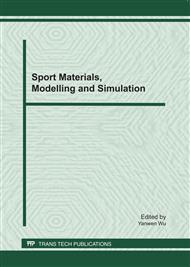p.108
p.112
p.117
p.122
p.127
p.133
p.139
p.144
p.148
Research on Non-Physical Simulation Methods of Sub-Object in Trampoline Simulation
Abstract:
In trampoline, in order to achieve rapid and stable motion with strong sense of immersion, the simulation of trampoline is needed, and this simulation of sub-object requires to be achieved according to instance data of human motion based on collision detection concept. This paper mainly focuses on collision detection between moving human body and trampoline, and the non-physical simulation methods of trampoline. Then, it analyzes the effectiveness and stability of these methods in order to provide some advices for the simulation of trampoline and other sports.
Info:
Periodical:
Pages:
127-132
Citation:
Online since:
February 2011
Authors:
Price:
Сopyright:
© 2011 Trans Tech Publications Ltd. All Rights Reserved
Share:
Citation:


